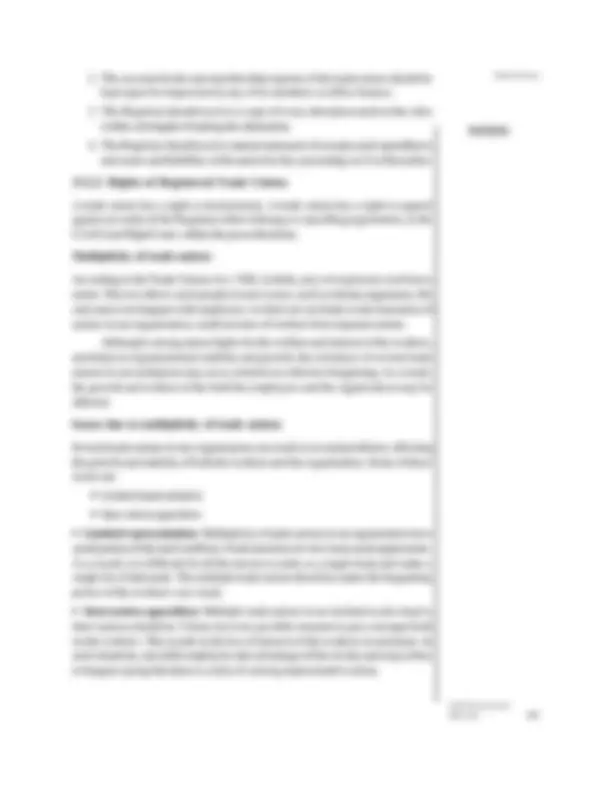



Study with the several resources on Docsity

Earn points by helping other students or get them with a premium plan


Prepare for your exams
Study with the several resources on Docsity

Earn points to download
Earn points by helping other students or get them with a premium plan
Community
Ask the community for help and clear up your study doubts
Discover the best universities in your country according to Docsity users
Free resources
Download our free guides on studying techniques, anxiety management strategies, and thesis advice from Docsity tutors
Human Resource Management (HRM) is a strategic and comprehensive approach to managing people within an organisation. It involves recruiting, hiring, training, evaluating, and rewarding employees to maximise their performance and align with the organisation’s goals. HRM also ensures compliance with labour laws, fosters a positive workplace culture, and supports employee development and well-being. By managing workforce planning, performance, compensation, and employee relations, HRM plays a vital role in organisational success. In today’s dynamic business environment, HRM is increasingly data-driven and aligned with long-term strategic planning, making it an essential function in both large corporations and small enterprises.
Typology: Lecture notes
1 / 2

This page cannot be seen from the preview
Don't miss anything!


Trade Unions
Self-Instructional 156 Material
dissolution of the union and changing its union. After all the requirements have been fulfilled, the Registrar shall register the trade union. Who can be a member
All persons who have attained the age of 15 years, are eligible to be a member of a registered trade union, subject to the rules of the union. Appointment of office-bearers
At least 50 per cent of the office bearers of a union should be employed in the industry related to the trade union. Outsiders such as lawyers, politicians, social workers, etc. can constitute the remaining 50 per cent. For being appointed as an office bearer, one must be: (a) 18 years old or above; and (b) should not been convicted by a court of law. Cancellation of registration
The registration of a trade union can be cancelled if an application has been forwarded for its cancellation. The Registrar can cancel a trade union by giving at least 2 months’ notice under any of the following circumstances. (a) if registration has been obtained by fraud or mistake (b) if the union has ceased to exist (c) if it has wilfully contravened any of the provisions of the Act; or (d) if any rule which is required under Section 6, has been deleted. Legal status of a registered trade union
(i) A trade union is a corporate body with perpetual succession and a common seal. (ii) It can acquire, hold, sell or transfer any movable or immovable property and can be a party to contracts. Dissolution of trade union
A notice of dissolution signed by any seven members and the secretary of the Union should be sent to the Registrar within 14 days of the dissolution. If the Registrar is satisfied, the notice will be registered and the union will be dissolved. Obligations
Self-Instructional Material 157
13.2.2 Rights of Registered Trade Unions
A trade union has a right to demonstrate. A trade union has a right to appeal against an order of the Registrar either refusing or cancelling registration, to the Civil Court/High Court, within the prescribed time.
Multiplicity of trade unions
According to the Trade Unions Act, 1926, in India, any seven persons can form a union. This Act allows such people to raise issues, such as initiate arguments, file suits and even bargain with employers. As there are no limits to the formation of unions in one organization, small sections of workers form separate unions.
Although a strong union fights for the welfare and interest of the workers, and helps in organizational stability and growth, the existence of several trade unions in one institution may act as a barrier in collective bargaining. As a result, the growth and welfare of the both the employees and the organization may be affected.
Issues due to multiplicity of trade unions
Several trade unions in one organization can result in several problems, affecting the growth and stability of both the workers and the organization. Some of these issues are:
Limited representation Inter-union opposition
Limited representation: Multiplicity of trade unions in an organization have small portion of the total workforce. Each union has its own issues and requirements. As a result, it is difficult for all the unions to unite as a single body and make a single list of demands. The multiple trade unions therefore make the bargaining power of the workers very weak.
Inter-union opposition: Multiple trade unions in an institution also lead to inter-union contention. Unions try every possible measure to get a stronger hold on the workers. This results in the loss of interest of the workers in unionism. In such situations, deceitful employers take advantage of this rivalry and may refuse to bargain saying that there is a lack of a strong representative union.